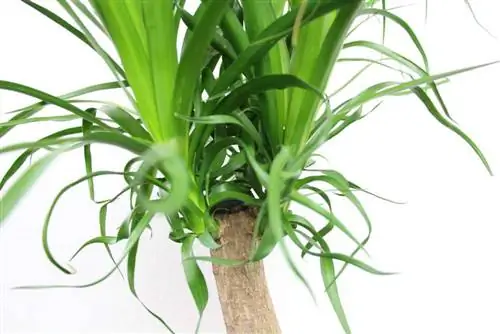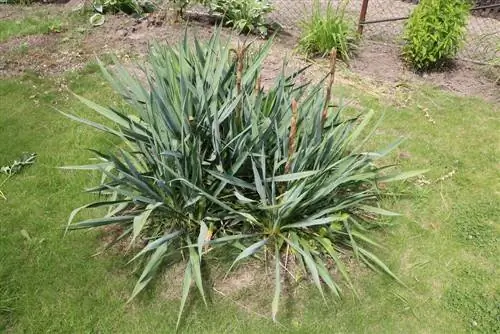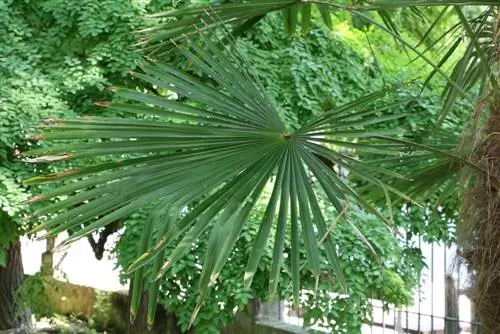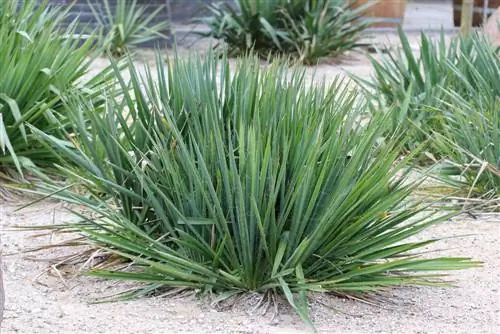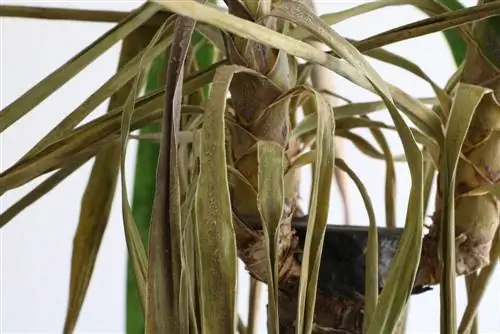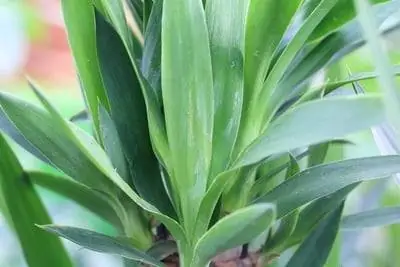- Author admin [email protected].
- Public 2023-12-17 03:39.
- Last modified 2025-01-24 12:45.
There are few types of yuccas that survive outdoors all year round. Most are only suitable as container plants that have to overwinter indoors. Even though it is easy to care for as a houseplant, there are a few things that need to be taken into account when overwintering so that the palm lily gets through the cold season in good he alth.
Hardy Yuccas
It is enough for a winter-proof palm lily if its location outside is protected from moisture and wind. They may be given a cover made of brushwood or leaves. In order to avoid mold formation, it is removed in good time in the spring. The following species are considered cold-resistant up to an average temperature of minus 15 degrees:
- blue palm lily (Y. baccata), also banana yucca
- Josua tree (Y. brevifolia), also Joshua palm lily, English. Joshua Tree
- Soap palm lily (Y. elata)
- Spanish Bayonet (Y. faxoniana), also Spanish Dagger, Palma de San Pedro, Faxon Yucca
- floppy palm lily (Y. flaccida)
- filamentous palm lily (Y. filamentosa)
- Blue-green palm lily (Y. glauca), also Great Plains Yucca
- Candle palm lily (Y. gloriosa)
- Dwarf palm lily (Y. nana)
- Y. recurvifolia
- Y. rostrata
- Y. thompsoniana
Note:
Protect palm lilies in the garden from large amounts of snow. A high snow cover can lead to rot and when it melts in the spring it creates too much moisture.
potted plants
Winter-hardy species that are kept in pots can overwinter outdoors if they have a suitable location, similar to yuccas in the garden. The volume of soil must not be too small, otherwise the substrate will freeze. To protect against the cold, place insulation material such as a polystyrene sheet under the pot and wrap the pot in fleece, bubble wrap or straw.
Note:
Don't forget to remove the winter protection after frost.
Overwintering non-hardy species
This also includes potted plants with pot volume that is too small.
Preparations
Before the palm lily is brought into the house, it is watered less. All yuccas originally grow in very dry places. Excess moisture causes root rot, especially at the end of the growing season when the plant no longer needs as much water. Also stop fertilizing. Too much nutrient supply damages the plant and makes it more susceptible to disease or damage caused by unfavorable weather.
Location
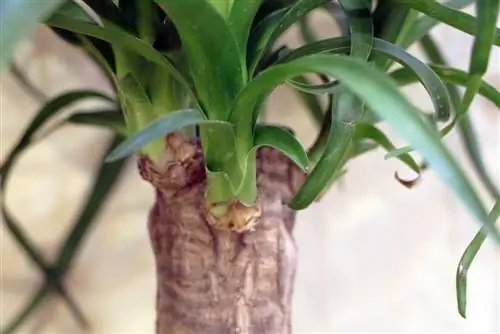
The palm lily can stay warm indoors. If you want her to go outdoors again next year, it makes more sense to find her a bright, draft-free but not too warm room. The most favorable temperature is 10 to 15 degrees. A south window is not well suited because of the strong sunlight. An east or west window or a bright place away from the windows is better.
In general:
The brighter the plant is, the warmer it can be.
Care
In winter you don't have to care for the palm lily much differently than in summer. If it is warm, it is watered regularly. If it is in a cool room, it is sufficient to water it rarely. Since the palm tree takes a break from growth in winter, it is not fertilized.
Diseases and pests
To ensure that the palm tree overwinteres he althily, check the plant regularly for pests and diseases. Spider mites appear when the air is too dry; they can be easily recognized by the fine webs between and on the leaves. For treatment it is often enough to spray the palm lily with water frequently. Brown leaves also indicate that the air is too dry. Droopy leaves do not necessarily mean that the plant needs to be watered. On the contrary, it can be root rot caused by too much moisture. If this suspicion exists, the plant must be repotted.
Wintering
As the days get longer again, start watering the plant more frequently. Place it in a brighter and warmer place and when the palm lily resumes growth, start fertilizing. After the winter, the palm lily should not be put back in the blazing sun outdoors immediately; it must be accustomed to the changed temperature and the stronger light. When the temperature is no longer in the single digits, it is first moved to a shady place in the garden. If there is a risk of severe cold at night, she comes back into the house. After a few days the plant can move to its final location.
Before the palm lily is placed in the garden, it is repotted.
- Cut off any dead, brown leaves.
- Take the plant out of its old pot and check the roots. Dead roots are removed.
- In a new, larger pot, add a layer of drainage material. Then there is substrate that is suitable for yuccas, such as succulent soil.
- Place the plant in the new pot and fill it with soil. Press it firmly.
- Water the plant carefully and place it in the designated place.
A palm lily that is too large can be shortened before moving outdoors. To do this, the trunk is cut to the desired height. The palm tree will soon sprout again at this point. The cut head can be planted in another pot and will grow after a short time.

